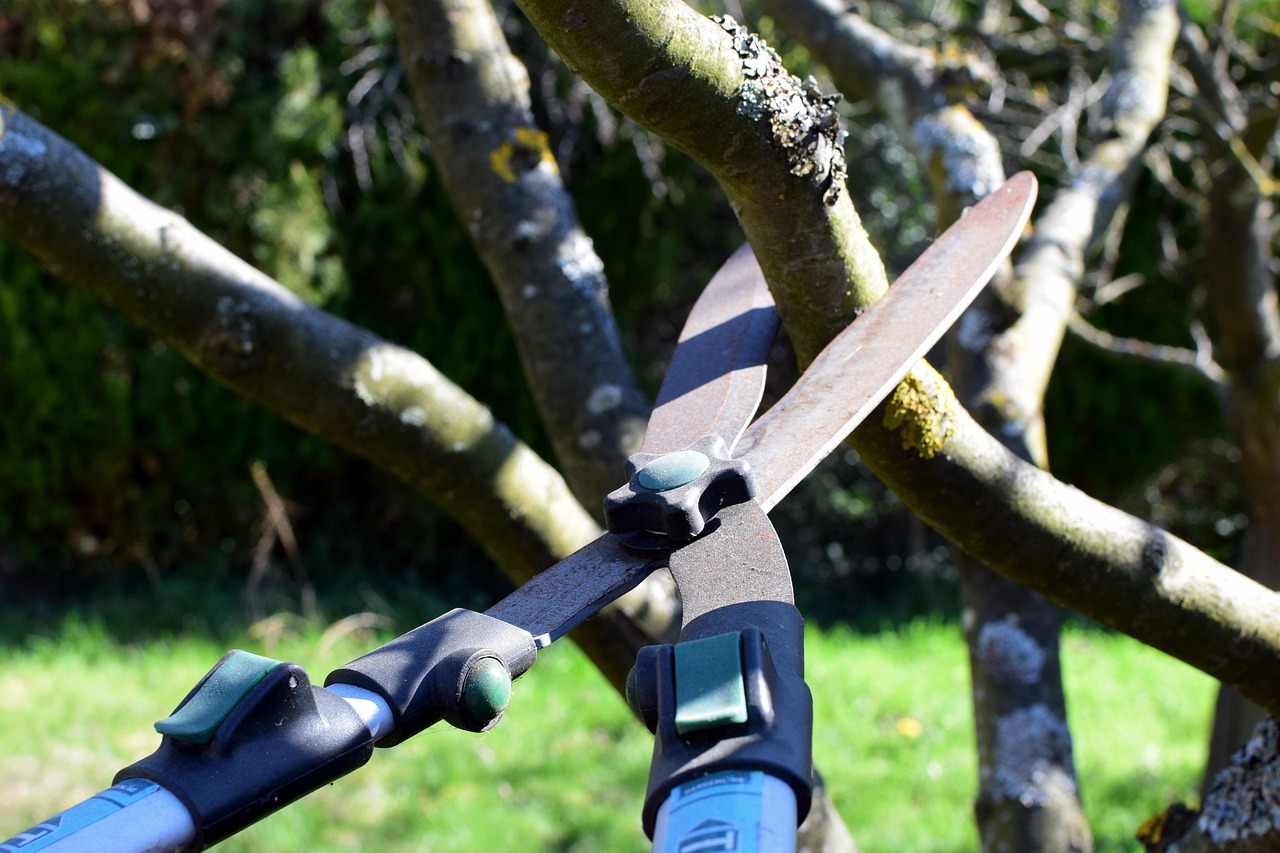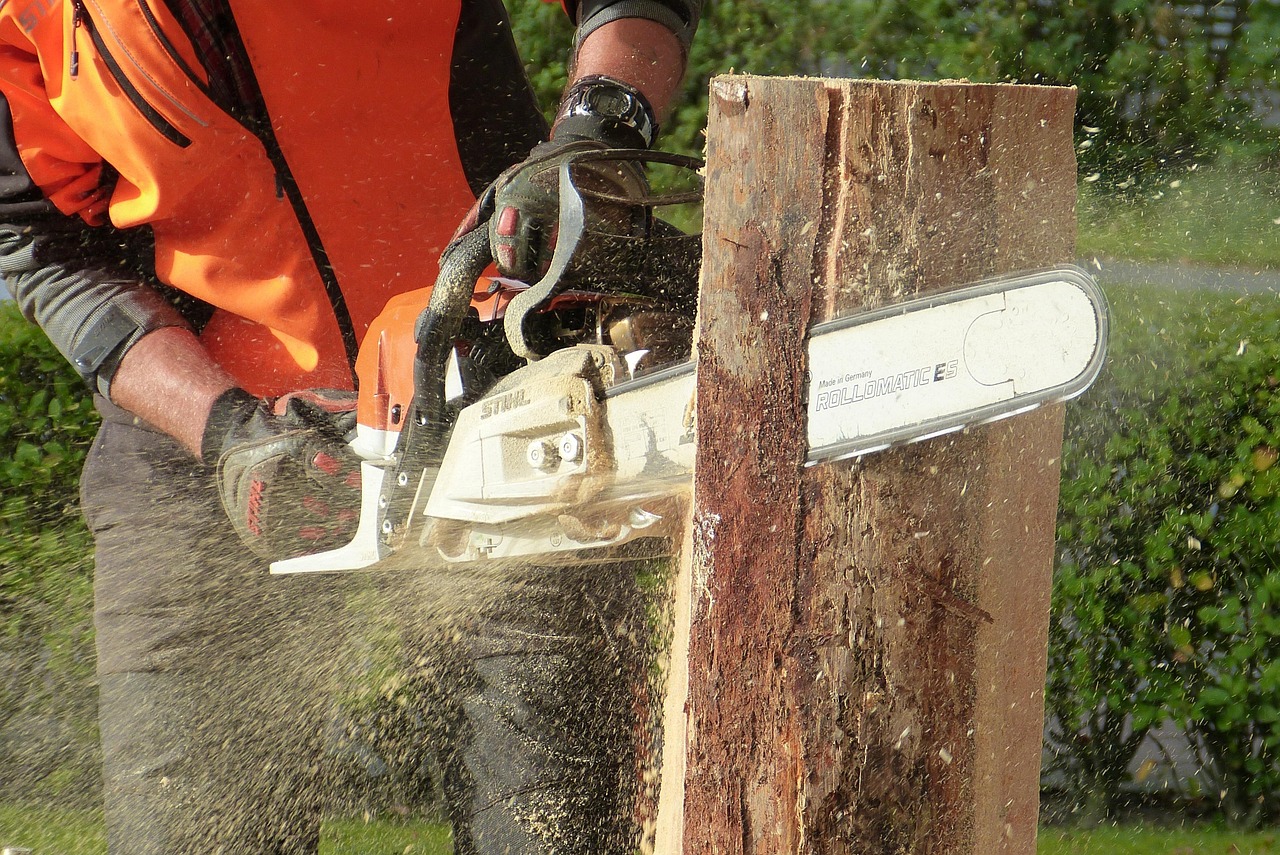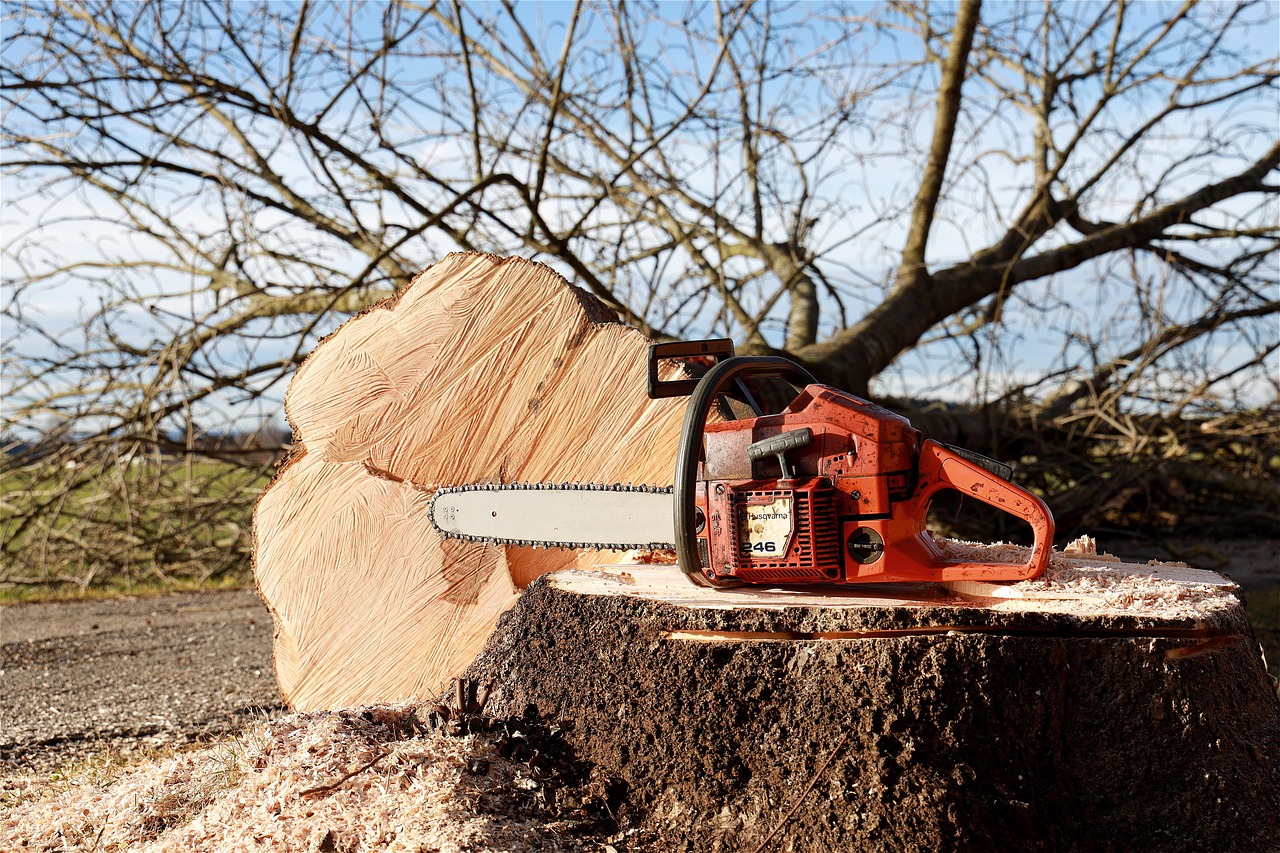Tree pruning around electric and main utility lines is essential for maintaining safety and ensuring reliable service. Proper pruning reduces the risk of power outages and prevents tree branches from interfering with utility infrastructure.
Understanding the Importance of Tree Pruning
Tree pruning is a vital practice for homeowners and utility companies alike. It involves cutting back branches to promote healthy growth and maintain the overall shape of the tree. When trees grow near electric and main utility lines, they can pose significant risks. Overgrown branches can lead to power outages, fire hazards, and damage to electrical equipment.

In urban environments, where trees and utility lines often coexist, effective management becomes crucial. Regular pruning helps prevent accidents and ensures that trees do not obstruct power lines or other utility infrastructure. The guidelines for pruning around these lines are established to protect both the trees and the public.
Potential Hazards of Neglected Tree Growth
When trees are not pruned adequately, they can create several hazards. Some of these include:
- Power Outages: Overhanging branches can come into contact with power lines, causing short circuits and outages.
- Fire Risks: Trees touching power lines can create sparks that may ignite nearby vegetation.
- Property Damage: Falling branches or entire trees can cause significant damage to homes, cars, and other structures.
- Injury Risks: Unmanaged trees pose dangers to pedestrians and vehicles, especially during storms.
Best Practices for Pruning Around Utility Lines
To ensure safety and compliance with regulations, certain best practices should be followed when pruning trees near electric and main utility lines. These practices include:

- Hire Professionals: Always consider hiring certified arborists or utility line clearance professionals. They possess the necessary training and tools to prune safely.
- Know the Regulations: Familiarize yourself with local laws and guidelines regarding tree pruning around utility lines.
- Timing is Key: Prune during the appropriate season to minimize stress on the tree. Late winter or early spring is often ideal.
- Avoid Topping: Never top trees as this can lead to weak growth and increased risk of disease.
Tools Required for Safe Pruning
Using the right tools is essential for effective tree pruning. Here are some commonly used tools:
| Tool | Description |
|---|---|
| Hand Pruners | Ideal for small branches up to ¾ inch in diameter. |
| Loppers | Used for cutting branches up to 2 inches thick. |
| Saws | Useful for larger branches that require more power. |
| Chainsaw | A powerful tool for larger jobs, but requires caution and safety measures. |
| Safety Gear | Includes gloves, goggles, and helmets to protect against falling debris. |
Before starting any pruning task, ensure that you have the necessary tools at hand and that they are in good working condition. Safety should always be a priority when working near electric lines.
The Role of Utility Companies
Utility companies play a critical role in managing tree growth around their infrastructure. Many utilities have specific programs dedicated to tree maintenance and safety. These programs often include:

- Regular Inspections: Utility companies assess tree growth regularly to identify potential hazards.
- Community Education: Providing information about safe tree planting and maintenance practices.
- Collaboration with Arborists: Partnering with professional arborists to ensure best practices are followed during pruning efforts.
By working together with utility companies, homeowners can help maintain safe environments while enjoying the aesthetic benefits of trees. Understanding the importance of tree pruning around electric and main utility lines leads to safer communities for everyone.
The Benefits of Proper Tree Pruning
Proper tree pruning offers numerous benefits beyond just safety. These include:
- Improved Tree Health: Regular pruning encourages healthy growth, reducing the risk of disease.
- Aesthetics: Well-pruned trees enhance the visual appeal of your property.
- Increased Property Value: Healthy, well-maintained trees can increase property value significantly.
Caring for trees adjacent to utility lines is a shared responsibility that requires awareness and action from homeowners, professionals, and utility companies alike. By prioritizing these practices, we can ensure a safe environment while preserving the beauty of our green spaces.

Common Tree Species and Their Pruning Needs
Different tree species have unique growth patterns and pruning requirements. Understanding these differences is vital for effective tree maintenance, especially around electric and main utility lines. Here are some common tree species found near utility lines and their specific pruning needs:
| Tree Species | Growth Characteristics | Pruning Recommendations |
|---|---|---|
| Maple | Fast-growing, broad canopy | Prune in late summer to avoid sap bleed. |
| Oak | Large, spreading branches | Prune in late winter for better structure. |
| Pine | Narrow, conical shape | Prune during late winter to early spring. |
| Birch | Fast-growing with delicate branches | Prune in late summer to minimize bleeding. |
| Willow | Weeping branches, fast grower | Regular pruning needed to control growth. |
Knowing the specific pruning needs of each tree species aids in maintaining their health while ensuring safety around utility lines. This understanding can also influence when and how much to prune, as different trees respond better to certain techniques and timings.
The Role of Local Regulations and Guidelines
In many regions, local governments and utility companies have established regulations for tree pruning near power lines. These guidelines are designed to ensure public safety and the reliability of utility services. It is essential for homeowners and arborists to be familiar with these regulations.
Key components often include:
- Clearance Requirements: Specific distance requirements between tree branches and utility lines.
- Permitting Process: Some areas may require permits before pruning or removing trees near utility lines.
- Professional Standards: Guidelines on who is qualified to perform tree pruning work.
By adhering to local regulations, homeowners can avoid fines and ensure that their pruning practices are safe and effective. It also helps maintain the integrity of the utility infrastructure, which benefits the entire community.
Identifying When to Prune Trees
Knowing when to prune trees is crucial for effective maintenance. Several factors can help determine the appropriate timing for pruning, especially around utility lines:
- Season: Late winter or early spring is typically the best time for most tree species. This timing allows for healthy growth during the growing season.
- Tree Health: If a tree shows signs of disease or damage, immediate pruning may be necessary regardless of the season.
- Weather Conditions: Avoid pruning during wet or windy conditions, as this can increase the risk of accidents.
Regular monitoring of tree health and growth can help determine the best times for pruning. Homeowners should stay vigilant, especially if trees are near power lines, as timely action can prevent more significant issues later on.
The Impact of Pruning on Tree Growth
Proper pruning not only enhances safety but also positively influences the overall health and growth of trees. Here are some impacts of effective pruning:
- Encourages Healthy Growth: Pruning removes dead or diseased branches, allowing the tree to allocate energy to healthier parts.
- Improves Air Circulation: Thinning out dense foliage promotes better air circulation, reducing the risk of fungal diseases.
- Enhances Sunlight Exposure: Pruning allows sunlight to reach inner branches, promoting balanced growth throughout the tree.
By understanding these impacts, homeowners can make informed decisions about their tree care practices, ensuring that safety measures do not compromise the health of their trees.
The Importance of Ongoing Maintenance
Tree maintenance is not a one-time task. It requires ongoing attention to ensure that trees remain healthy and safe around utility lines. Here are some essential practices for ongoing maintenance:
- Regular Inspections: Conduct regular checks on tree health and growth, especially during extreme weather conditions.
- Prompt Action: Address any signs of disease or damage immediately to prevent further issues.
- Record Keeping: Keep records of pruning activities and health assessments for future reference.
This proactive approach to tree maintenance can significantly reduce risks associated with trees near utility lines while promoting a healthy environment for the trees themselves.
The Community’s Role in Tree Care
Caring for trees around electric and main utility lines is a community effort. Local residents can contribute by:
- Educating Themselves: Learning about safe tree planting and maintenance practices can empower communities.
- Participating in Local Programs: Engaging in community tree care programs helps foster a culture of responsibility towards local flora.
- Reporting Hazards: Informing local authorities about overgrown trees or potential hazards ensures prompt action is taken.
A collective commitment to tree care enhances safety for everyone while preserving the natural beauty of neighborhoods. By working together, communities can effectively manage tree growth around utility lines, leading to safer environments for all residents.
Safety Precautions During Tree Pruning
When pruning trees near electric and main utility lines, safety is the top priority. There are several precautions that individuals and professionals should take to minimize risks associated with pruning activities.
Personal Protective Equipment (PPE)
Using the right personal protective equipment is essential for anyone involved in tree pruning. PPE can help prevent injuries from falling branches or equipment. Key items include:
- Hard Hats: Protects the head from falling debris.
- Safety Goggles: Shields the eyes from flying wood chips and dust.
- Gloves: Provides grip and protects hands from cuts and scrapes.
- Steel-Toed Boots: Safeguards feet against heavy falling objects.
- High-Visibility Clothing: Ensures visibility to others in the vicinity.
Tools and Equipment Safety
The tools used for pruning should be well-maintained and appropriate for the job. Here are some tips for ensuring tool safety:
- Inspect Tools Regularly: Check for damage or wear before use.
- Use the Right Tool for the Job: Ensure that tools are suitable for the size of branches being cut.
- Keep Tools Sharp: Dull tools can lead to accidents and poor cuts.
- Avoid Overreaching: Use extension poles or ladders as necessary, but never overreach while cutting.
Working Near Utility Lines
Pruning trees near utility lines requires special considerations to ensure safety. Here are some guidelines to follow:
Maintain Safe Distances
It is crucial to maintain a safe distance from power lines while pruning. The recommended distance can vary based on local regulations, but general guidelines include:
- A minimum of 10 feet away from electrical lines during pruning.
- Keeping tools and equipment at least 10 feet away from power lines to avoid accidental contact.
Contact Utility Companies
If you are unsure about the safety of pruning near utility lines, it is wise to contact local utility companies. They can provide guidance and may even send a representative to assist with the work. In some cases, they may perform necessary pruning themselves, ensuring safety and compliance with regulations.
Tree Pruning Techniques
Understanding correct pruning techniques is vital for maintaining tree health while ensuring safety near utility lines. Below are some commonly used techniques:
Crown Thinning
Crown thinning involves selectively removing branches to increase light penetration and improve air circulation. This technique is particularly useful for trees with dense foliage. It helps reduce weight on branches that may come close to utility lines.
Crown Raising
Crown raising entails removing lower branches to provide clearance for pedestrians and vehicles. This technique can help prevent branches from obstructing utility lines, allowing for safer passage underneath.
Crown Reduction
Crown reduction involves carefully shortening branches to decrease the overall size of the tree canopy. This technique is particularly effective for controlling the height of trees near utility lines while maintaining their health and appearance.
Environmental Considerations
Caring for trees around utility lines also involves considering the local environment. Pruning practices can affect wildlife and ecosystem health. Here are some factors to keep in mind:
- Nesting Seasons: Be aware of local bird nesting seasons. Pruning during these times can disrupt habitats.
- Native Species: Prioritize native tree species when planting near utility lines, as they tend to require less maintenance and support local wildlife.
- Pesticide Use: Limit the use of chemicals that may harm beneficial insects or nearby plants during pruning activities.
Community Outreach Programs
Many communities have outreach programs aimed at educating residents about tree care around utility lines. These programs might include workshops, informational sessions, and volunteer opportunities. Participation in such programs can enhance community knowledge and promote responsible tree maintenance practices.
Workshops and Demonstrations
Workshops often cover topics such as safe pruning techniques, identification of tree species, and understanding local regulations. These educational sessions usually include hands-on demonstrations, allowing participants to gain practical experience in tree care.
Volunteer Opportunities
Engaging in community tree care initiatives provides an opportunity for residents to contribute positively to their environment. Volunteer programs often organize tree planting events or community clean-up days focused on maintaining green spaces safely and effectively.
The Future of Tree Management Around Utilities
The approach to tree management around utility lines continues to evolve as new technologies and methods are developed. Here are some trends shaping the future of tree care in this context:
- Drones: The use of drones for monitoring tree health and assessing growth patterns is becoming more common, allowing for safer inspections in hard-to-reach areas.
- Sustainable Practices: Increasing emphasis on environmentally friendly practices that promote biodiversity and ecosystem health while managing tree growth around utilities.
- Smart Technology: The integration of smart technology in urban forestry management helps cities monitor tree health in real-time, improving response times for maintenance needs.
As communities embrace these advancements, the collaboration between homeowners, arborists, and utility companies will become even more crucial. By staying informed and proactive, everyone can contribute to safer environments while preserving the beauty of trees in urban settings.
Best Practices for Homeowners
As a homeowner, being proactive about tree pruning around electric and main utility lines is crucial for safety and tree health. Here are some best practices to consider:
Regular Assessments
Conducting regular assessments of tree growth is essential. Homeowners should look for signs of overgrowth or branches that may pose risks to utility lines. This can include:
- Checking for branches that are close to or touching power lines.
- Monitoring the overall health of the tree, such as leaf discoloration or dead branches.
- Looking for signs of pest infestation which may weaken the tree structure.
Educating Yourself on Tree Species
Understanding the specific growth habits of trees in your yard can guide effective pruning practices. Each species has unique characteristics, which influence how and when they should be pruned. Researching these can help you make informed decisions about maintenance.
Establishing a Pruning Schedule
Creating a tree maintenance schedule can help ensure timely pruning. This schedule should take into account seasonal changes and specific tree species’ needs. Regular pruning not only promotes health but also prevents potential hazards associated with utility lines.
Community Involvement and Collaboration
Community involvement plays a significant role in effective tree management. By collaborating with local arborists, utility companies, and neighbors, you can foster a culture of shared responsibility for tree care.
Neighborhood Tree Care Initiatives
Consider starting or joining neighborhood initiatives focused on tree care. These programs can include:
- Community pruning days where residents come together to maintain trees.
- Workshops led by arborists to educate residents on safe pruning techniques.
- Tree planting events to replenish local green spaces while considering proximity to utility lines.
Building Relationships with Utility Companies
Developing a positive relationship with local utility companies can facilitate better communication regarding tree care. Regularly informing them about any concerns you have regarding tree growth near utility lines can help prevent potential hazards before they become issues.
The Role of Technology in Tree Management
Advancements in technology are transforming how we manage and maintain trees in urban environments. Here are some ways technology is impacting tree care:
- Tree Health Monitoring: Technologies like sensors and drones can provide real-time data on tree health, allowing for timely intervention.
- Mobile Applications: Apps designed to assist homeowners in identifying tree species and offering pruning advice are becoming increasingly popular.
- Online Resources: Websites and online forums offer a wealth of information on best practices, safety guidelines, and tips for maintaining trees near utility lines.
Impact on Local Ecosystems
The management of trees around utility lines significantly impacts local ecosystems. Properly maintained trees provide numerous ecological benefits, including:
- Biodiversity Support: Healthy trees serve as habitats for various wildlife species, contributing to local biodiversity.
- Air Quality Improvement: Trees improve air quality by absorbing pollutants and producing oxygen.
- Soil Erosion Prevention: Tree roots help stabilize soil, reducing erosion and promoting healthy landscapes.
By adopting responsible practices for tree pruning around utility lines, homeowners can contribute positively to their local environment while ensuring safety and compliance with regulations.
Conclusion
The importance of proper tree pruning around electric and main utility lines cannot be overstated. Regular maintenance not only enhances the health and aesthetics of trees but also ensures safety for communities. Understanding the specific needs of different tree species, adhering to local regulations, and employing safe pruning techniques are crucial for successful tree care.
Homeowners play a vital role in this process by staying informed, engaging in community initiatives, and fostering collaboration with local utility companies. As technology continues to advance, utilizing new tools will enhance our ability to manage trees effectively and sustainably. Ultimately, a collective commitment to responsible tree management will lead to safer environments and healthier ecosystems for future generations.
